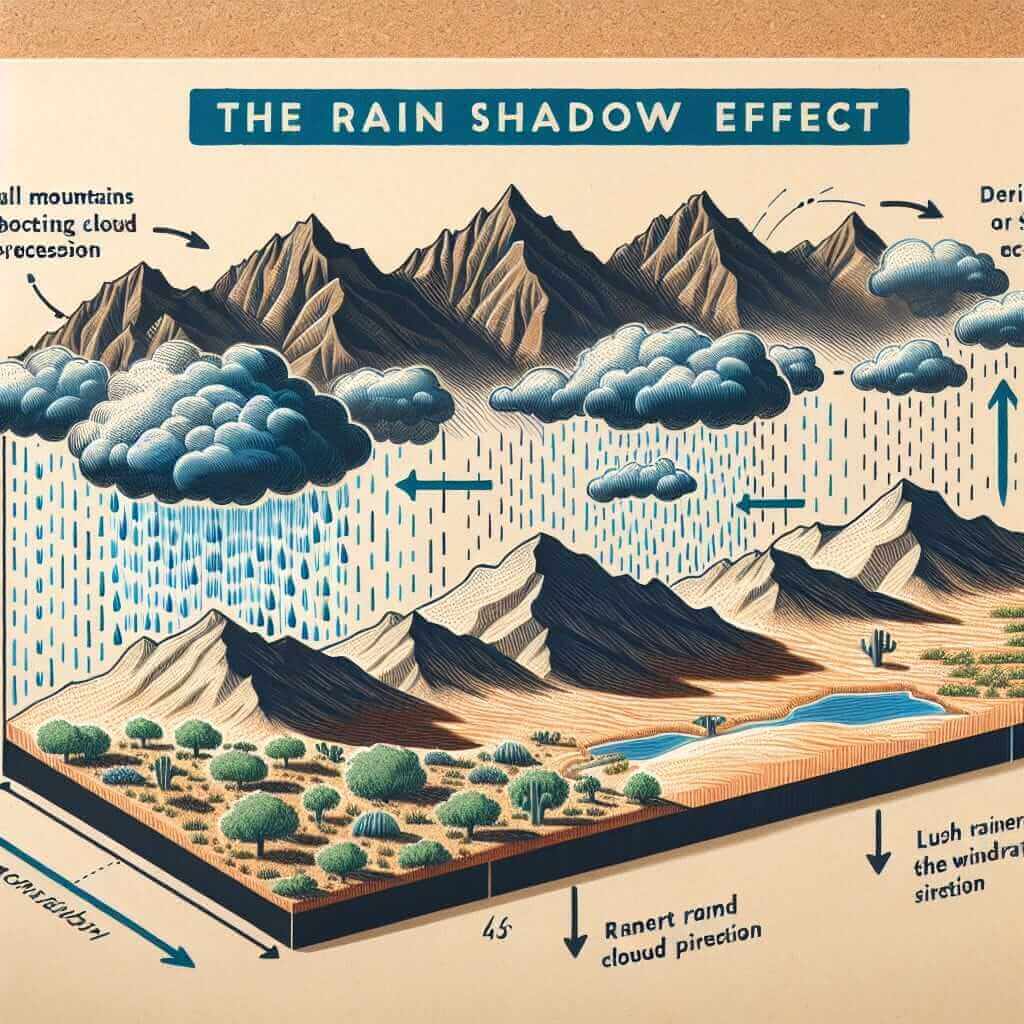As an IELTS instructor with over two decades of experience, I often encounter students who underestimate the importance of background knowledge in the IELTS Reading test. A common theme you might encounter is the formation of deserts, a topic that intertwines geography, environmental science, and even current events. Understanding how deserts are formed can be surprisingly helpful in comprehending and answering IELTS Reading passages effectively.
The Significance of “How Deserts are Formed” in IELTS Reading
The IELTS Reading test evaluates your ability to understand complex texts on a variety of topics. While you are not expected to be an expert in every field, having some background knowledge about frequently recurring themes can give you an edge. “How deserts are formed” falls under the umbrella of environmental science and geography, both popular subject areas in IELTS Reading.
Familiarizing yourself with this topic allows you to:
- Decode vocabulary: You’ll encounter words like “arid,” “precipitation,” “evaporation,” “rain shadow,” and “desertification,” all crucial to understanding desert formation.
- Grasp concepts: Understanding concepts like atmospheric circulation, climate change, and human impact on the environment can be key to interpreting the passage correctly.
- Improve reading speed: Prior knowledge enables you to skim and scan texts more efficiently, focusing on finding answers rather than deciphering unfamiliar concepts.
Unveiling the Process: How Deserts are Formed
Deserts, characterized by their aridity and minimal rainfall, are not random occurrences on our planet. They are formed through a combination of natural processes:
1. Atmospheric Circulation:
- Hadley Cells: Air rises at the equator due to intense heat and flows towards the poles. As it cools, it descends around 30 degrees latitude, creating high-pressure zones with clear skies and little rainfall – ideal conditions for deserts.
- Rain Shadows: Mountain ranges can block rain-bearing winds. As the air is forced to rise over mountains, it cools, and the moisture condenses, leading to rainfall on the windward side. However, the leeward side receives dry air, resulting in a rain shadow desert.

2. Cold Ocean Currents:
Cold ocean currents flowing alongside coastlines can cool the air above them. This cooler air holds less moisture, resulting in minimal precipitation and the formation of coastal deserts.
3. Distance from Oceans:
As winds travel inland, they lose moisture, leading to less rainfall in areas far from large water bodies. This is known as continentality.
4. Human Impact:
Activities like deforestation, overgrazing, and unsustainable agricultural practices can degrade land, leading to desertification – the transformation of fertile land into deserts.
Illustrative Examples from IELTS Reading
Let’s consider how this knowledge can be applied to an IELTS Reading passage:
Example: “…the Atacama Desert, nestled between the Andes Mountains and the Pacific Ocean, is a product of a rain shadow effect. The towering Andes block moist air from the east…”
By understanding the rain shadow effect, you can immediately deduce why the Atacama is so dry, even though it’s located near an ocean.
Tips for Success:
- Read Widely: Explore articles and documentaries about deserts, climate change, and environmental issues.
- Build Vocabulary: Keep a notebook of relevant terms and their definitions.
- Practice Active Reading: While practicing IELTS Reading passages, try to identify the cause-and-effect relationships related to environmental phenomena.
Remember, knowledge is power in the IELTS Reading test. By familiarizing yourself with common themes like “how deserts are formed,” you’ll be better equipped to tackle any passage that comes your way. Good luck!